Beautiful weather for this walk and it was interesting to see how Wingfield Pines site had changed in this third visit for the year. The meadow was full with waist to shoulder high plants and there were plenty of butterflies flying around. Along side the river things were not so good for fungi. The river had burst its banks one or more times over the past month and washed away the leaf litter so there were not many terrestrial mushrooms. We did make a couple of interesting finds. The main one was a lot of Ductifera pululahuana ( White Jelly fungus). La Monte reported that he had only found it once before and I (Richard Jacob) had only seen it once before out of state. It seems to like the very wet well rotted tree trunks lying near the bank of the river. Most of the species found were saprophytes that eat dead matter. We only found a couple of symbiotic species. We would like to thank the gentleman who showed us a picture of the red capped bolete and then went back and picked it for us. We should be able to confirm the ID for that species shortly.
Species list entered by Richard Jacob. Species identified by La Monte Yarroll, John Plischke III and Richard Jacob.
List of species found on the walk at Wingfield Pines BioBlitz3:
[icon style=”camera”] Ceratiomyxa fruticulosa (Coral Slime),
[icon style=”camera”] Cerrena unicolor (Mossy Maze Polypore),
[icon style=”camera”] Conocybe lactea (White Dunce Cap),
[icon style=”camera”] Crepidotus applanatus (Flat Crep),
[icon style=”camera”] Cyathus striatus (Splash Cups),
[icon style=”camera”] Daedaleopsis confragosa (),
[icon style=”camera”] Diatrype stigma (),
[icon style=”camera”] Ductifera pululahuana ()
[icon style=”camera”] Gymnopus dryophilus (Oak-loving Collybia),
[icon style=”camera”] Hypocrea americana (),
[icon style=”camera”] Marasmius rotula (Pinwheel Marasmius),
[icon style=”camera”] Pluteus cervinus (Deer mushroom),
[icon style=”camera”] Pluteus longistriatus (Pleated Pluteus),
[icon style=”camera”] Polyporus elegans (Elegant Polypore),
[icon style=”camera”] Polyporus squamosus (Dryad’s Saddle, Pheasant Polypore),
[icon style=”camera”] Poronidulus conchifer (),
[icon style=”camera”] Russula mariae (Purple-bloom Russula),
[icon style=”camera”] Schizophyllum commune (Split Gill),
[icon style=”camera”] Scutellinia scutellata (Reddish Eyelash Cup),
[icon style=”camera”] Trichaptum biforme (Violet Toothed-Polypore)
Species not currently on clubs life list:
Russula species
Armillaria (mellea) rhizomorphs
Bovista sp. (very small)
Steccherinum sp.
[icon style=”camera”] Xerocomellus intermedius (), or possibly Xerocomellus chrysenteron (will check spores to confirm)
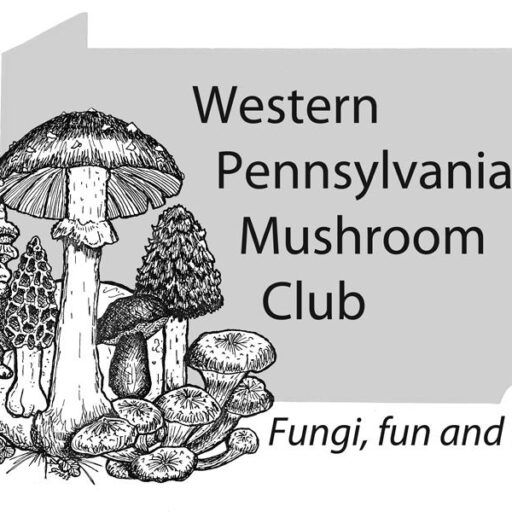
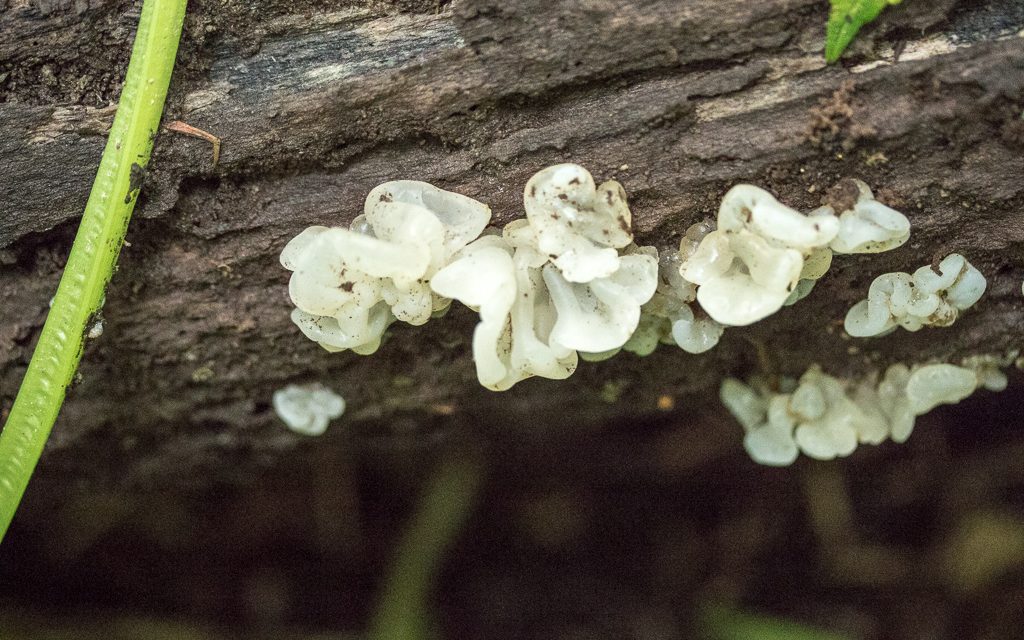












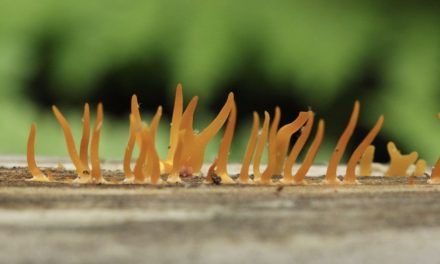
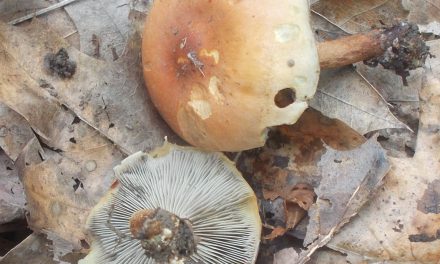
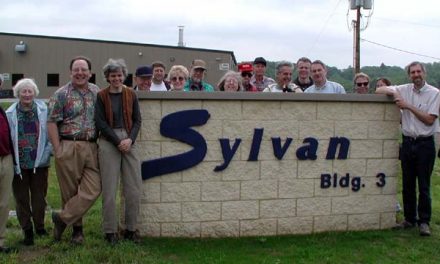
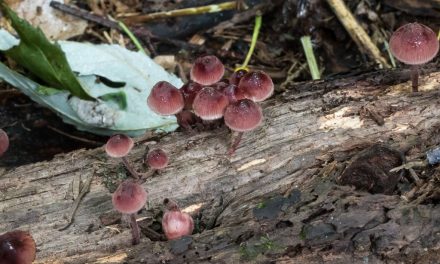

Also Daedaleopsis confragosa and Steccherinum sp. JRP may have a full id for the Steccherinum.
I have eaten the white jelly brain fungus (Ductifera pululahuana). Grows on oaks in Western NY. I slice it thin and add it to chicken soup towards the end of cooking. No flavor but feels like beef marrow in the mouth. Melts away as you chew. Must have some nutritional value. Very common fungus here. Keeps well in bowl of water in fridge. I’ve never found anyone to say it is edible. Don’t know exactly why. Probably due to strange look and texture, not toxicity.